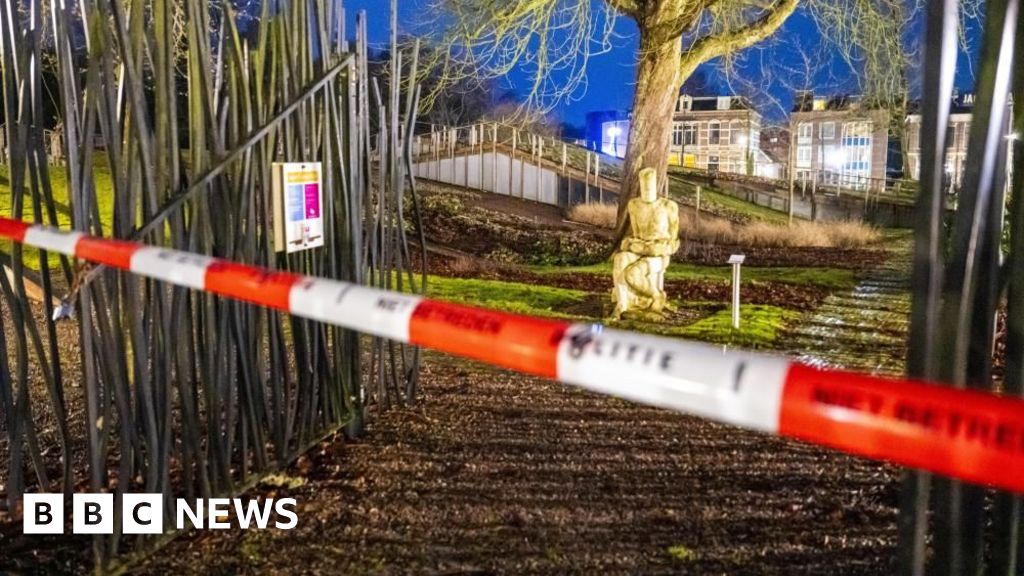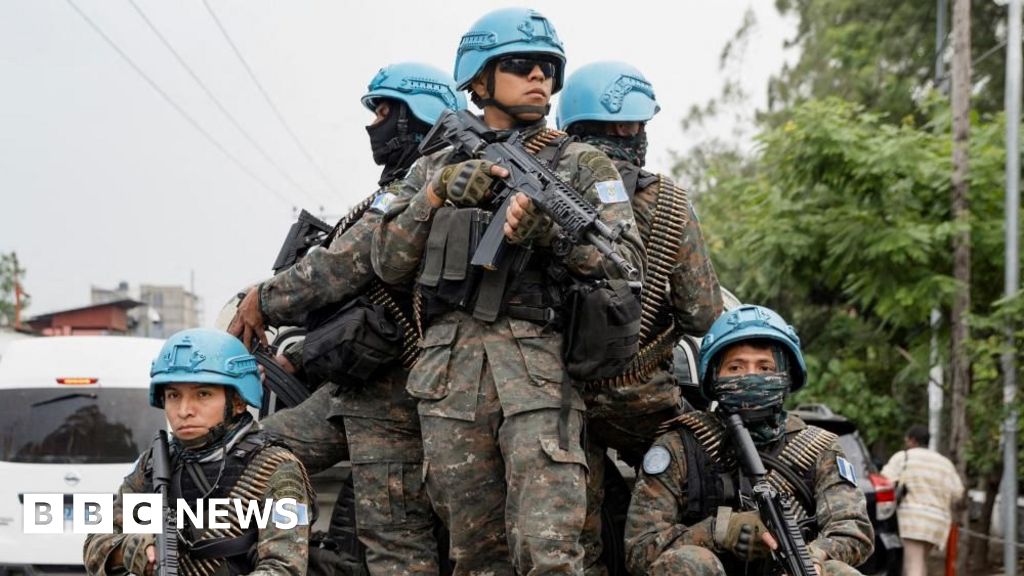ARTICLE AD BOX
 Image source, AFP
Image source, AFP
Mexico's president calls the Tren Maya "the greatest construction project in the world". Environmentalists are horrified
By Will Grant
BBC Mexico correspondent, Yucatán
To the ancient Maya, the cenotes of the Yucatán Peninsula were sacred as they believed them to be portals to the gods of the underworld.
These underground caves are also one of the most unspoilt freshwater ecosystems in Latin America.
Their tranquillity contrasts with the recent noise and construction unfolding directly above them.
The final columns and tracks are being laid for the Mexican president's pet infrastructure project: a partially-elevated rail link called the Tren Maya (Maya Train).
The network will stretch for 1,500km (930 miles) in a vast arc from Chiapas state to the border with Belize - bringing, its supporters say, tourism and development to the jungle.
The Tren Maya has overcome numerous obstacles before its inaugural journey. It cost around $28.5bn (£22.5bn), running an estimated three times over budget.
With characteristic bravado, President Andrés Manuel López Obrador, also known as Amlo, has called it "the greatest construction project in the world".
Environmentalists, however, are horrified.
The deforestation along the route has been catastrophic for the habitats of species like jaguars, scarlet macaws and spider monkeys, they say.
Activists from a group called "Sélvame del Tren" (a play on "selva", Spanish for jungle, and the phrase "sálvame del tren", meaning "save me from the train") took us into the labyrinth of tunnels and caverns to show the impact on the region's pristine waters.
"This is naturally filtered, purified water, you can drink it," says cave diver Bernadette Carrión as we enter a cenote dubbed "Oppenheimer", in reference to the surrounding devastation.
"Once it gets polluted, no life will be sustained here," she adds.
Inside the cenote, there is a constant sound of dripping as water percolates through the rock into translucent pools below.
Activists fear train tracks built on top of honeycomb-like cave networks could collapse
Above us is a yawning ceiling, covered in intricate stalactites. It is a magnificent sight, one which very few people have seen as "Oppenheimer" does not feature in any tourist trips or local cenote visits.
A constant flow of subterranean water in the Yucatán links the caves to the sea.
"So, the more we pollute the centre of the peninsula, the more we pollute the ocean. It's already harming the coral reefs, the algae, all this oxygen production," argues Ms Carrión.
As we wade and swim through the underground maze, renowned Mexican hydrologist Guillermo D. Christy points out the karstic topography, which is where erosion of the limestone has carved out the rivers and caves.
The stalactites - hundreds of mineral formations hanging like melted candle wax above us which naturally filtrate the rainwater - are being clogged by cement dust, he says.
Scientists like Guillermo D. Christy are warning about the construction's environmental impact
As the team takes samples to measure water quality, they do not mince their words about the train, calling it a "pharaonic monument" which they say was erected to a vainglorious leader.
Above ground, though, the Tren Maya has split opinions and divided communities.
The Maya village of Vida y Esperanza has been bisected by Line 5, the stretch of the railroad which runs from Cancún to the south. A maintenance station is being built opposite the local school.
Some villagers whose land was expropriated were well compensated by the government and polls suggest more than 80% in the region are optimistic the train will boost the economy, particularly among Amlo's core supporters.
But Benjamin Chim had his fields dynamited and turned into a quarry for materials for the railroad. He never received compensation for them because, as is the case with many Maya farmers, he could not prove ownership.
"We'd been working this land for 40 years," he explains, pointing at a scene of utter devastation as truck after truck moves around the site.
Benjamin Chim and other Mayan farmers have struggled to prove ownership of their land
"I'd applied for the [property] deeds but never received them," Mr Chim adds. The military, who are behind the train's construction and operation, told him he can return to the quarried land after the project is complete. But by then, it will be unusable.
While we were speaking, military personnel ordered us off the site.
The plan for Line 5 changed mid-construction after luxury hotel chains lobbied to have it removed from their doorstep.
Activists say building surveys were rushed and, as the cave network is like honeycomb or Swiss cheese, they fear the elevated sections of track could collapse.
In an exclusive interview, the director of the Tren Maya, General Óscar Lozano Águila, insisted it was perfectly safe.
"If you ask me as a soldier, as a technician or as a simple systems operator, my answer would be the same: every Mexican and every international tourist travelling on our train will be safe."
He hails it as an engineering feat to rival any in the world, especially given the porous rock beneath the track and assures us it was built to rigorous codes and standards.
"We have all worked together to achieve this magnificent goal. This is a great, great piece of infrastructure."
Image source, AFP
Image caption,Activists have been opposing the megaproject, but public opinion is split
Amlo, meanwhile, sees the Tren Maya as part of a wider vision to revive Mexico's once-great train services.
As part of his grand plan, some 20,000km (12,500 miles) of track currently used exclusively for transporting cargo will serve passengers again and a coast-to-coast freight line is being created to rival the Panama Canal.
President López Obrador calls it a "priority for national development".
We emerged from the tunnels into a little-known archaeological gem, a cenote called Manitas with 31 pre-Hispanic handprints on the cave walls.
It was once a burial site for some of the first peoples of the Americas.
Amlo's train may bring millions of new tourists to the Yucatán Peninsula. But the rush to develop could also ruin the hidden treasures upon which the region was founded.

 1 year ago
23
1 year ago
23








 English (US) ·
English (US) ·